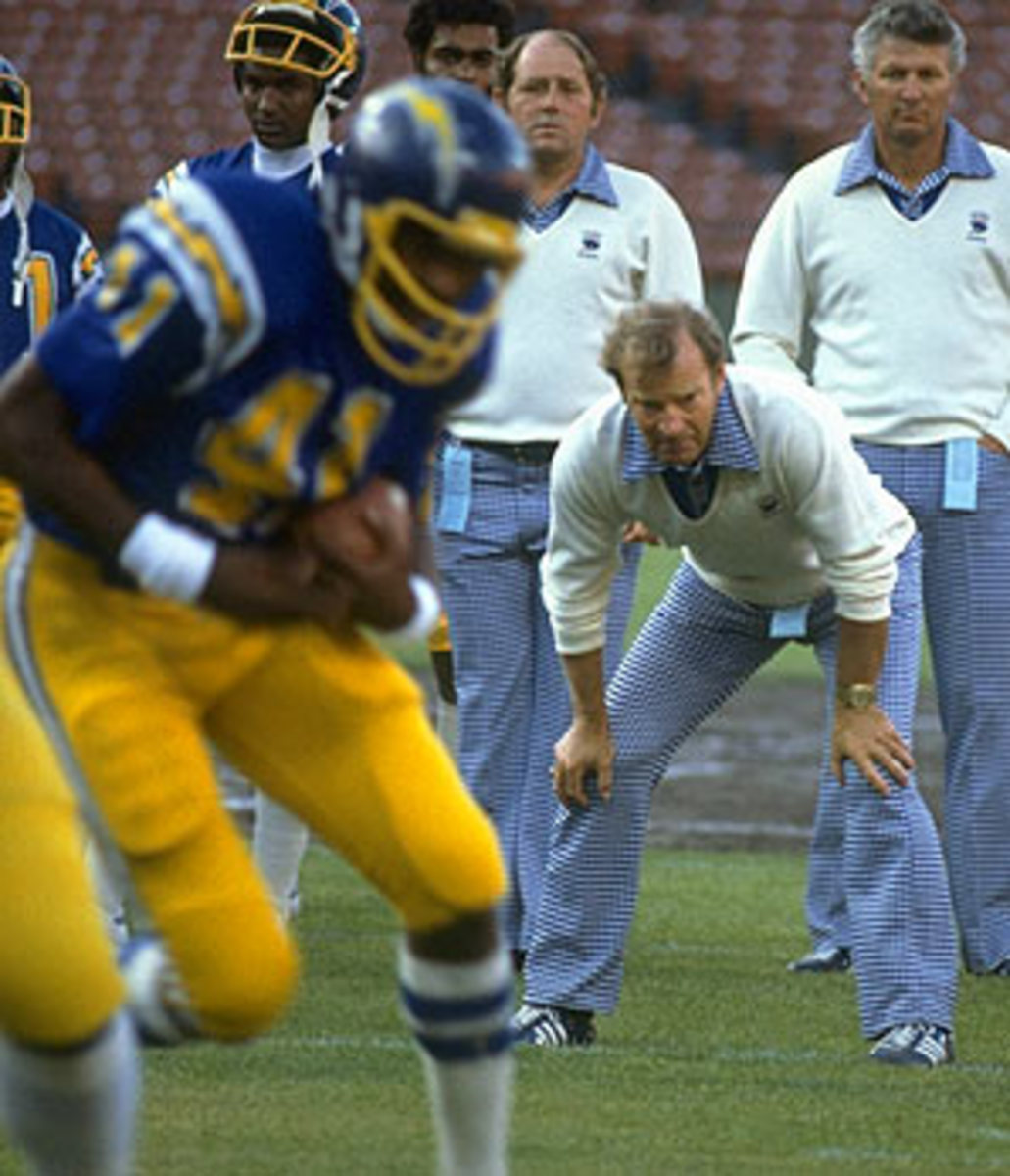Don Coryell's bold approach helped mold the NFL into what it is today
Retired quarterback Brian Sipe was speaking at a luncheon for the San Diego Hall of Champions sports museum a couple of years ago when someone asked about playing at San Diego State for Don Coryell, the intense and wildly imaginative coach who loved to throw the football. Sipe smiled and paused. It was as if he were asking himself: How best to describe the offensive genius that was Coryell?
After a brief moment, Sipe recounted how when the Cleveland Browns drafted him into the NFL in 1972, it felt like he had been placed in a remedial class for passing offenses. "I felt like I had taken a step back," he said. "The things we were doing at San Diego State were far more advanced."
The NFL learned as much a year later, when Coryell joined the St. Louis Cardinals. In a league that relied heavily on the run, Coryell challenged conventional philosophies by winging it. His approach was so bold, his game plans so innovative, that in five seasons with the Cardinals and nine with the Chargers, he not only changed how the game was played -- but molded it into what we see today.
His contributions deserve to be remembered, because Thursday, Coryell died in La Mesa, Calif., after a lengthy illness. He was 85.
"Don was a giant among men in this profession," said Bears offensive coordinator Mike Martz, who used to watch Coryell's San Diego State teams while attending nearby Mesa Community College in the early 1970s. "He was one of a handful of guys who changed this game forever. His whole approach -- from how he coached to play-calling to how he treated his players -- was different from everybody else. I promise you there isn't an offense in the league that doesn't have something in its passing game from Don."
As much as it's a cliché, the history of the NFL cannot be written without an extensive chapter on Coryell. He is credited with creating the I-formation (while an assistant under John McKay at USC), founding the three-digit passing system, creating the H-back position, and using situational substitutions. "He was way ahead of his time," former Colts Tony Dungy said. "The things that they did offensively and the way that they moved the ball, the way that he figured out talent and utilized the best of everybody's abilities -- he was phenomenal. Most of these principles that people are running now trace back to what he did."
Coryell was the brains behind "Air Coryell," the high-flying, high-scoring offense that helped put QB Dan Fouts, tight end Kellen Winslow and wide receiver Charlie Joiner in the Pro Football Hall of Fame. The offense was as entertaining as it was explosive, with Fouts becoming the first player to throw for more than 4,000 yards in three successive seasons. He led the league in passing three times, including 1981 when he set a then-record with 4,802 yards. Sundays were almost anticlimactic for the bearded quarterback because the real adrenaline rush came early in the week, when he received the game plan and saw how Coryell planned to attack the defense.
"He was just so different from every other football coach," Fouts said. "He was not the stereotype, and the teams that he put together and coached -- whether at San Diego State or with the St. Louis Cardinals or the Chargers -- were not the stereotype. We were unique, and he was unique. For that uniqueness, we all owe a great debt of gratitude to him."
Coryell has yet to receive the ultimate tip of the hat -- a spot in the Pro Football Hall of Fame -- presumably because his teams failed to reach a Super Bowl. The Chargers earned four trips to the playoffs in his nine seasons and lost twice in the AFC Championship Game. Yet ...
Coryell's fingerprints are all over the Lombardi Trophy. Retired Redskins coach Joe Gibbs, a Coryell assistant at San Diego State, won three Super Bowls in four appearances while running Coryell's offense. Dallas won three Super Bowls in four years running his system; the St. Louis Rams won one Super Bowl and lost another doing the same.
The Super Bowl argument would carry more weight with me if either Tom Flores or George Seifert were in the Hall of Fame. They won two Super Bowls each with the Raiders and 49ers, respectively, yet have never been a finalist for induction. If Super Bowls are the be-all and end-all, why not?
Also, Coryell didn't inherit powerhouses when he arrived in the NFL. The Cardinals had gone 25 consecutive years without a playoff appearance, yet Coryell led them to back-to-back trips in his first full seasons. (The franchise made only one playoff appearance in the 20 years after Coryell departed.) In San Diego, the Chargers had gone 13 straight seasons without a playoff appearance before Coryell's first full year. However, they earned postseason berths in each of his first four full seasons, including two trips to the AFC Championship Game.
"Super Bowls count so much now; that's all anyone talks about," says Dungy, who won Super Bowl XLI with the Colts. "But if you talk about impact on the game, training other coaches -- John Madden, Bill Walsh, Joe Gibbs to name a few -- and influencing how things are done, Don Coryell is probably right up there with Paul Brown. He was a genius."






